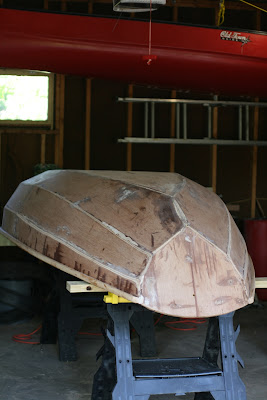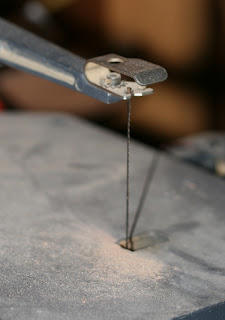First outing was about ten minutes on Typo Lake, where we discovered a small leak in the daggerboard trunk.
It sounds like most suffer from this to begin with as the trunk is prone to jostle and the layer of bedding compound is very thin and narrow. Think it's coming up around the bedlogs mostly. Jammed it somewhat by sealing up the underside of the daggerboard socket with duct tape, dusting the leaky areas with wood putty powder and then throwing in some water, allowing it to leak in.
Second outing was on White Bear Lake, where we discovered the oars were in bad need of wrapping and the middle seat snapped under the rower's weight (half suspected this would happen as we routed the hole for the daggerboard a bit too long.) Wrapped the oars with 1/4" rope with a manila cap, cut a new seat and added a cedar support block in the middle to support the rower's weight.

Third test was on Martin Lake. Ended up seizing the halyard and boom to the mast when underway and not sailing to prevent it from draping across the boat and getting in the way. Rowing was much better, but the daggerboard got jammed on some of the resin we'd aplied, so the total sailing portion of the voyage was about fifteen minutes give or take as we made signifant leeway. Planning on sealing the inside of the boat with 5800 marine sealant, and then sanding down the inside of the trunk and sealing it up with resin now that I have a better idea where the leak is coming from. May use blocks of the soft packing foam to really apply pressure to get the epoxy in there and apply two layers, really getting it good and solid before sanding it down.
May have a proper workflow down by mid-Fall.































